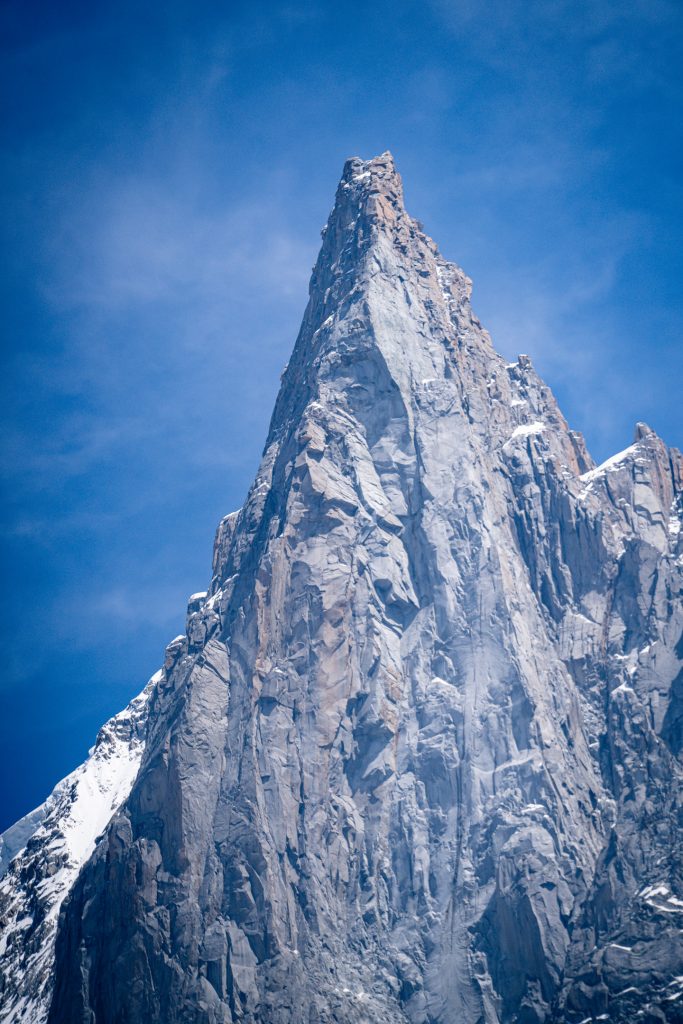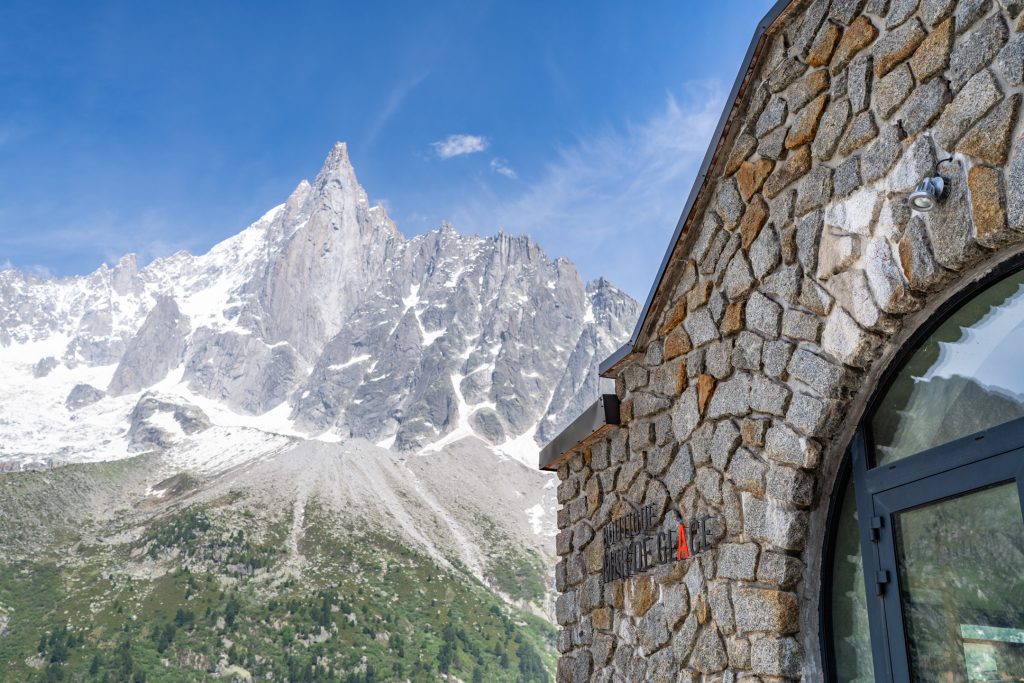
Unforgettable views from the Montenvers train
For visitors who are not mountaineers, it is perfectly possible to admire the Drus in all their splendour.
The Montenvers train, which links Chamonix to the Mer de Glace, offers one of the best views of these legendary peaks. From the arrival station, perched at an altitude of 1,913 metres, there is a panoramic terrace where you can see the Drus standing proud against the sky, with their dizzying west face bathed in light at sunrise or sunset.
Les Drus: vertiginous jewels of the Mont Blanc massif
Nestling in the heart of the Chamonix valley, Les Drus fascinate visitors with their slender silhouette and legendary history. These two granite peaks, Petit Dru (3,730 m) and Grand Dru (3,754 m), majestically dominate the Alpine landscape. A veritable icon of the Mont-Blanc massif, this summit attracts the attention of hikers, photographers and, above all, mountaineers from all over the world.
A spectacular natural site!
Situated on the western ridge of the Aiguille Verte, the Drus rise like a granite fortress above the Charpoua glacier. Their west face, almost 1,000 metres high, is one of the steepest in the Alps. This vertical wall, carved out of protogine, a variety of granite typical of the massif, is a mythical playground for seasoned climbers.
The word ‘Dru’ comes from the Gallic dru, meaning “tree” or ‘oak’, a symbol of strength and wisdom. The name also evokes the Druids, ‘those who have the knowledge of the tree’. A poetic etymology for a summit that embodies the raw power of nature.
A legendary mountaineering story
The Drus became part of mountaineering history at the end of the 19th century. The Grand Dru was climbed for the first time on 12 September 1878 by Clinton Thomas Dent and his companions. The more difficult Petit Dru was conquered a year later, in 1879, by Jean Charlet-Straton and his team.
But it was in 1955 that the name of the Drus became legendary, thanks to Walter Bonatti, who made a solo ascent of the south-west pillar of the Petit Dru, now known as the Pilier Bonatti. This route, considered to be one of the greatest feats of mountaineering, was unfortunately partially destroyed by landslides in 2005.

